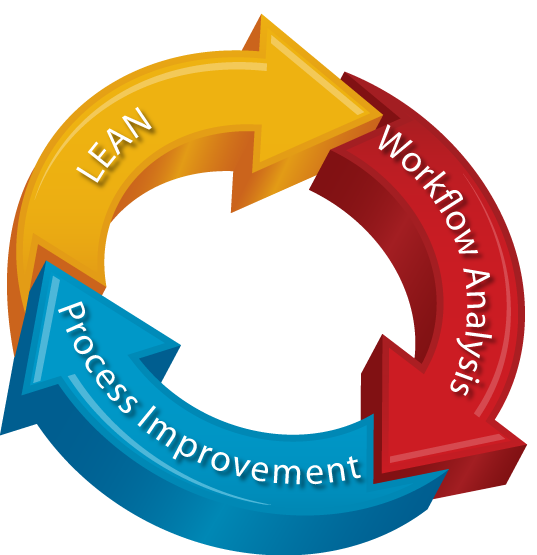Business Process Management
Workflow Analysis
Improvements in the quality, efficiency and effectiveness of healthcare are the result of re-engineering processes that make it easy to do the right thing and help mistake-proof (poke-yoke) task for improved patient outcomes.
Using MatrixView solutions workflow analysis and process re-engineering helps your organization:

|
- Understand existing workflows in clinical and administrative areas
- Identify alternatives and compare to best practices
- Re-engineer processes
- Create process and workflow disciplines to help eliminate errors
- Create, articulate, and communicate new processes
- Obtain genuine organizational “buy-in”
- Create a bias toward action and fast attainment of improvements
- Easy to educate and train staff
- Kaizan Events - Establish system and approach
- PDCA Cycle – Create measurement system and Plan-Do-Check/Analyze - Act culture
|
Mobile Matrix solutions will identify the specific touch points that users will have as they move patients through their department. Knowing what should happen next when something occurs, the software can notify the responsible people when the triggering event happens.
The Institute for Healthcare Improvement believes “that lean principles can be — indeed, already are being — successfully applied to the delivery of health care."
Lean thinking begins with driving out waste so that all work adds value and serves the customer’s needs. Identifying value-added and non-value-added steps in every process is the beginning of the journey toward lean operations.
So what is meant by “lean thinking”? Simply put, lean means using less to do more.
Lean thinking is not typically associated with health care, where waste of time, money, supplies, and good will are a common problem. But the principles of lean management can, in fact, work in health care in much the same way they do in other industries.
The Six Sigma system relies on defining, measuring, analyzing, improving and controlling their products and services.
The Lean Six Sigma system relies on reducing and eliminating waste in all forms.
MatrixViewTM solution suite can assist your organization in implementing Lean Six Sigma methodologies both in the incremental and breakthrough improvement approaches. Helping to identify and eliminate waste and improve outcomes for:
MatrixViewTM provides necessary Six Sigma Tools and to define, measure and analyze targets for applying Lean Principles to eliminating all forms of Waste.
Applying Lean Principles to eliminate 7 Common Forms of Waste in Health Care:
1. Overproduction and Production of Unwanted Products:
The most important form of waste –leads to all the others
Any health care service that does not add value to the patient…Examples:
- Antibiotics for respiratory infections
- CT screening for coronary disease
- Medication given early, testing and treatment done ahead of time to suit staff schedules and equipment use
2. Material Movement:
Any movement that does not add value to the patient…
- Moving patients, meds, specimens, samples, equipment
3. Worker Motion:
Any movement not adding value…
- Searching for patients, meds, charts, supplies, paperwork, equipment
- E.g. No printer in exam room for prescriptions, patient education etc.
4. Waiting:
Any time wasted waiting before or between processes…
- ER staff waiting for admission, can’t see next patient
- Waiting for test results, records, information
- Nurse waiting for meds blood draw, transport, OR cleaning
- Patient waiting for anything–tests, visits, discharge, phone
5. Over-processing:
Waste associated with performing tasks and processes multiple times…
- Multiple bed moves, re-testing, repeat paperwork, repeat registration, multiple consent forms….
6. Inventory:
Waste associated with having too much or too many…
- Beds assignments, pharmacy stock, lab supplies, specimens awaiting analysis …
7. Correction of defects:
Waste associated with detecting or correcting errors and defects…
- Medication errors, wrong patient, wrong procedure, missing or incomplete information, blood re‐draws, misdirected results, wrong bills…
Adapted From Long, Mersereau, Billi
|
|

